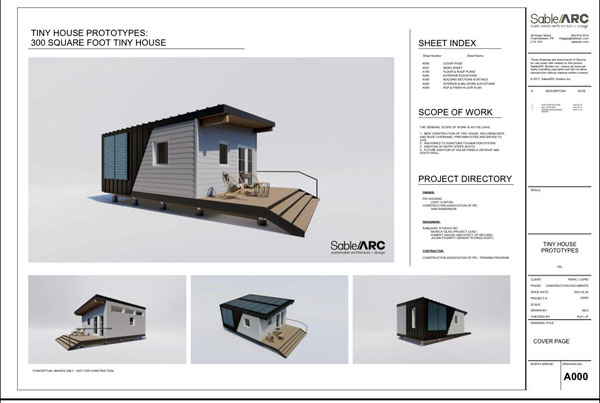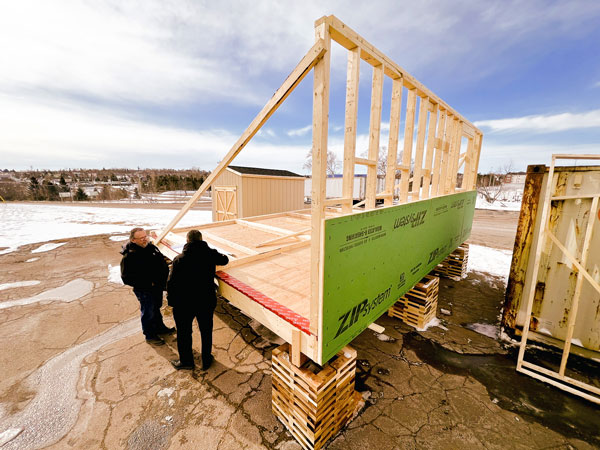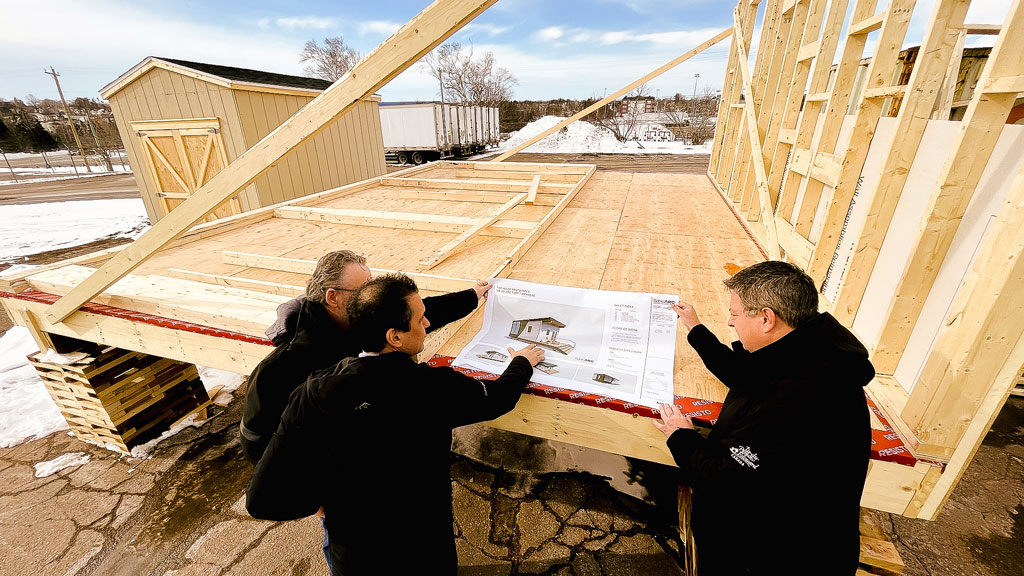Tiny homes could prove to be part of the solution to the affordable housing crunch in P.E.I.
They can be built quickly at a modest cost and still be energy efficient.
That is the thinking behind the Construction Association of PEI (CAPEI) and the provincial government’s Ministry of Social Development and Housing in an initiative to build 30 tiny net-zero-ready homes by the end of 2025 for residents on P.E.I.’s social housing registry.
prototype designed by SableARC, a leading sustainable architect in P.E.I., is now under construction by students in CAPEI’s Discover Carpentry Program, an eight-week pre-apprenticeship course at the association’s training centre in Charlottetown.
The goal is to have the house completed and ready for delivery by truck and trailer at the end of April. The site for the house and 29 others to follow has yet to be announced by the province, says Sam Sanderson, general manager of the CAPEI.
Sanderson says CAPEI hopes to build one tiny house per eight-week course through several pre-apprenticeship courses running concurrently at the association’s two-year-old training facilities.

Building the 300-square-foot net-zero homes was an easy shift for CAPEI, which had been running an eight-week course training young people how to construct eight-by-10 utility sheds.
“I told the minister (Matthew Mackay) that we’re training people how to build essentially mini-barns, so why don’t we go a step further and build tiny homes? When we brought the architect to the table, the government was very quick to support this design.”
The wood frame homes feature energy efficient windows and solar panels on the roof.
Robert Haggis, principal architect at SableARC, says initially the idea was to top up efficiency through the use of R-40 insulation but energy calculations showed less insulation and more solar panel coverage improved overall efficiency.
While the first tiny homes planned under the initiative are 300 square feet, the goal is also to build 400 and 500-square-foot homes under the program, Haggis says, pointing out his firm is working on larger designs now.
Sanderson says a positive takeaway is that the construction association is training new workers how to build an energy efficient home from the beginning of their careers in the field.
The net-zero-ready designs won’t be complicated to construct, adds Haggis.
“We are using materials that are readily available and do not need to be premanufactured because the lead time can be so long.”

Haggis, who says his firm has received “great interest” in the past two years from people wanting tiny or “tinyish” homes, will offer a free publication of the design drawings of the homes built under the initiative.
At CAPEI’s training centre the students are taught by association staff which includes Red Seal certified carpenters. Graduating students get 240 hours towards their apprenticeship, says Sanderson.
“We are getting the unemployed employed, giving them employable skills to help the industry struggling with skilled labour shortages and at the same time building affordable housing,” explains Sanderson. “It’s a win-win situation.”
In partnership with the provincial ministry, Holland College’s accredited building trade programs will be building two of the tiny homes as well.
P.E.I. is committed to being net-zero compliant by 2030 and a zero carbon province by 2040, 10 years ahead of the federal government’s objective.



Recent Comments